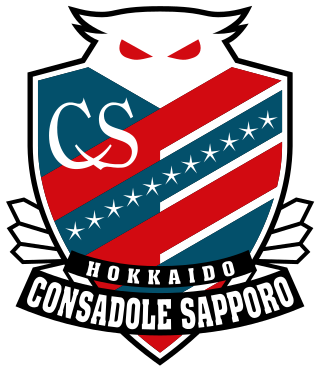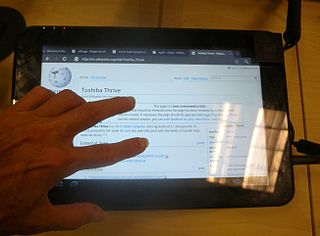
Toshiba Corporation, commonly known as Toshiba and stylized as TOSHIBA, is a Japanese multinational conglomerate corporation headquartered in Minato, Tokyo, Japan. Its diversified products and services include power, industrial and social infrastructure systems, elevators and escalators, electronic components, semiconductors, hard disk drives (HDD), printers, batteries, lighting, as well as IT solutions such as quantum cryptography which has been in development at Cambridge Research Laboratory, Toshiba Europe, located in the United Kingdom, now being commercialised. It was one of the biggest manufacturers of personal computers, consumer electronics, home appliances, and medical equipment. As a semiconductor company and the inventor of flash memory, Toshiba had been one of the top 10 in the chip industry until its flash memory unit was spun off as Toshiba Memory, later Kioxia, in the late 2010s.
Westinghouse Electric Company LLC is an American nuclear power company formed in 1999 from the nuclear power division of the original Westinghouse Electric Corporation. It offers nuclear products and services to utilities internationally, including nuclear fuel, service and maintenance, instrumentation, control and design of nuclear power plants. Westinghouse's world headquarters are located in the Pittsburgh suburb of Cranberry Township, Pennsylvania. Brookfield Business Partners, a Canadian private equity fund and a subsidiary of Brookfield Asset Management is the majority owner of Westinghouse.

Japan Rugby League One is a rugby union competition in Japan. It is the highest level of professional rugby competition in the country. The Japan Rugby Football Union created the competition in 2003, by absorbing the Japan Company Rugby Football Championship, to drive up the overall standard and popularity of the sport and improve the results of the Japan national rugby union team. The chief architect of the league was Hiroaki Shukuzawa who strongly felt the urgency of improving Japanese domestic company rugby to a professional level which would allow Japan to compete more convincingly at Rugby World Cups.

Toshiba Brave Lupus Tokyo is a Japanese rugby union team in the Top League. They are based in Fuchu, Tokyo, as is their local rival Suntory Sungoliath. They won the second ever Top League championship in the 2004-5 season and the Microsoft Cup in 2005 under their innovative and inventive coach Masahiro Kunda, himself a former hooker for Toshiba and Japan. They are particularly known for the strength of their mauls. Before the Top League was created, the team was called Toshiba Fuchu after their location. Their slogan for 2006 season was "Once again to the Pinnacle (Restart)". The team rebranded as Toshiba Brave Lupus Tokyo ahead of the rebranding of the Top League to Japan Rugby League One in 2022.

EMI Music Japan Inc., formerly Toshiba EMI, was one of Japan's leading music companies. It became a wholly owned subsidiary of British music company EMI Group Ltd. on June 30, 2007, after Toshiba sold off its previous 45% stake. Its CEO and president was Kazuhiko Koike. When EMI Music Japan was trading as Toshiba-EMI, it was involved with the production of anime. On April 1, 2013, the company became defunct, following its absorption into Universal Music Japan as a sublabel under the name EMI Records Japan.

Hokkaido Consadole Sapporo is a Japanese professional football club, which plays in the J1 League. The team is based in Sapporo, on the island of Hokkaido.

The Satellite was a line of laptops manufactured by Toshiba's computer subsidiary now known as Dynabook Inc. Models in the Satellite family varied greatly—from entry-level models sold to consumers at major retailers to full-fledged business laptops sold through enterprise channels. The latter were marketed as the Satellite Pro.

The Toshiba T1100 is a laptop manufactured by Toshiba in 1985, and has subsequently been described by Toshiba as "the world's first mass-market laptop computer". Its technical specifications were comparable to the original IBM PC desktop, using floppy disks, a 4.77 MHz Intel 80C88 CPU, 256 KB of conventional RAM extendable to 512 KB, and a monochrome LCD capable of displaying 80x25 text and 640x200 CGA graphics. Its original price was 1899 USD.

The Toshiba T1000 was a laptop computer manufactured by the Toshiba Corporation in 1987. It had a similar specification to the IBM PC Convertible, with a 4.77 MHz 80C88 processor, 512 KB of RAM, and a monochrome CGA-compatible LCD. Unlike the Convertible, it includes a standard serial port and parallel port, connectors for an external monitor, and a real-time clock.

The Toshiba T1200 is a discontinued laptop that was manufactured by the Toshiba Corporation, first made in 1987. It is an upgraded version of the Toshiba T1100 Plus.

HD DVD is an obsolete high-density optical disc format for storing data and playback of high-definition video. Supported principally by Toshiba, HD DVD was envisioned to be the successor to the standard DVD format.

The Portégé is a range of business-oriented subnotebooks and ultrabooks manufactured by Dynabook Inc. From 1993 to 2016, the Portégé was manufactured by Toshiba's computer subsidiary. The Portégé series was briefly discontinued after Toshiba left the computer market in 2016. In 2019, Sharp Corporation purchased majority interest of Toshiba inactive's computer subsidiary and resurrected the Portégé.

The Toshiba T3100 was a portable PC manufactured by Toshiba released in 1986. It featured a 10 MB hard drive, 8 MHz Intel 80286 CPU and a black & orange 9.6" gas-plasma display with a resolution of 640x400 pixels.
Statistics of JSL Cup in the 1981 season.

The Toshiba Thrive was a 10.1" tablet computer running Android 3.2.1. PC World praised its full-sized and versatile SD card slot, HDMI port, and USB ports with host functionality and the ability to handle large external drives as well as standard peripherals like USB Keyboards, printers and cameras. The review concluded that there were minor disadvantages including a bulky form and poor sound quality. CNET's review said "Its grooved back, full HDMI and USB support, full SD card slot, and replaceable battery justify its very bulky design."
Variable refrigerant flow (VRF), also known as variable refrigerant volume (VRV), is an HVAC technology invented by Daikin Industries, Ltd. in 1982. Like ductless minisplits, VRFs use refrigerant as the cooling and heating medium. This refrigerant is conditioned by one or more condensing units, and is circulated within the building to multiple indoor units. VRF systems, unlike conventional chiller-based systems, allow for varying degrees of cooling in more specific areas, may supply hot water in a heat recovery configuration without affecting efficiency, and switch to heating mode during winter without additional equipment, all of which may allow for reduced energy consumption. Also, air handlers and large ducts are not used which can reduce the height above a dropped ceiling as well as structural impact as VRF uses smaller penetrations for refrigerant pipes instead of ducts.

Inside Films is a joint effort between Intel and Toshiba that focuses on creating social films. Founded in 2011, Inside Films has produced three social productions spanning three different genres.
Kioxia Holdings Corporation, simply known as Kioxia and stylized as KIOXIA, is an American-Japanese multinational computer memory manufacturer headquartered in Tokyo, Japan. The company was spun off from the Toshiba conglomerate as Toshiba Memory Corporation in June 2018. It became a wholly owned subsidiary company of Toshiba Memory Holdings Corporation on March 1, 2019, and was renamed Kioxia in October 2019. In the early 1980s, while still part of Toshiba, the company was credited with inventing flash memory. In the second quarter of 2021, the company was estimated to have 18.3% of the global revenue share for NAND flash solid-state drives. The company is the parent company of Kioxia Corporation.
Dynabook Inc., formerly Toshiba Client Solutions Co., Ltd., is a Japanese personal computer manufacturer owned by Sharp Corporation; it was owned by, and branded as, Toshiba from 1958 to 2018. It claims its Toshiba T1100, launched in 1985, as the first mass-market laptop PC. Toshiba had used the brand name "DynaBook" or "dynabook" since 1989, but Dynabook became the worldwide brand in 2019.

Toshiba Pasopia is a computer from manufacturer Toshiba, released in 1981 and based around a Zilog Z80 microprocessor. This is not to be confused with the Toshiba Pasopia IQ, a similar named line of MSX compatible computers.














